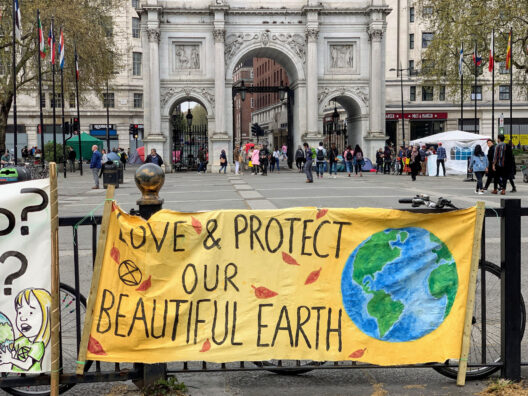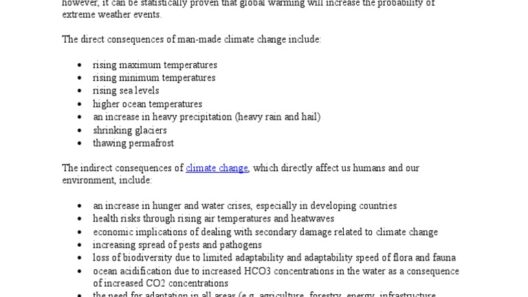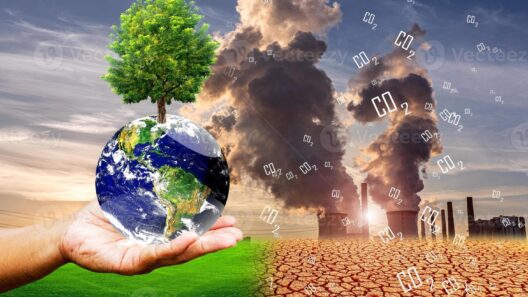Global warming is one of the most pressing challenges facing humanity today. Understanding how it operates is crucial for crafting effective responses. At the heart of this phenomenon lies the greenhouse effect, a naturally occurring process that warms the Earth by trapping heat in the atmosphere. Let’s delve into the intricate science behind global warming, exploring its mechanisms, implications, and potential solutions.
The Mechanisms of the Greenhouse Effect
The greenhouse effect is initiated by the sun, which emits energy in the form of solar radiation. This energy reaches Earth and is either absorbed or reflected back into space. The Earth’s surface absorbs a portion of this solar energy and, in turn, re-emits it as infrared radiation, or heat. However, not all this heat escapes back into the atmosphere; a significant portion is trapped by certain gases present in the atmosphere, known as greenhouse gases (GHGs).
The most notable greenhouse gases include carbon dioxide (CO2), methane (CH4), nitrous oxide (N2O), and water vapor. These gases have the unique ability to absorb and re-radiate infrared radiation, thereby creating a thermal blanket around the Earth. This natural phenomenon maintains the planet’s average temperature at around 59 degrees Fahrenheit (15 degrees Celsius), essential for sustaining life as we know it. However, human activities have significantly altered the balance of this natural process.
Anthropogenic Contributions to Greenhouse Gas Emissions
Over the past century, industrialization, deforestation, and various forms of land-use alterations have dramatically increased the concentrations of greenhouse gases in the atmosphere. Fossil fuels such as coal, oil, and natural gas are burned for energy, releasing vast amounts of carbon dioxide. Transportation, manufacturing, and electricity generation contribute substantially to this trend.
Additionally, agriculture plays a significant role, particularly through methane emissions from livestock and rice fields, alongside nitrous oxide released from fertilized soils. Recent statistics indicate that agriculture and land use are responsible for about 24% of all greenhouse gas emissions globally. As the human population continues to expand, so too does the pressure on natural resources and the atmosphere.
The Consequences of Global Warming
The ramifications of global warming are far-reaching and multifaceted. As temperatures rise, the polar ice caps and glaciers begin to melt, resulting in higher sea levels. This melting threatens coastal populations, ecosystems, and freshwater resources. Moreover, warmer temperatures can lead to more extreme weather events such as hurricanes, droughts, and floods, causing damage to infrastructure, agriculture, and livelihoods worldwide.
Another impactful consequence is the disruption of ecosystems. Species are forced to adapt to changing climates or face extinction. Coral reefs, often referred to as the “rainforests of the sea,” are particularly vulnerable to temperature increases, leading to widespread coral bleaching and loss of biodiversity.
Moreover, the altered climate affects agricultural productivity, with some regions experiencing reduced crop yields while others may face increased pest pressures and diseases. The resulting food insecurity can incite social unrest and geopolitical tensions, further complicating an already precarious global landscape.
Mitigation Strategies: Tackling the Crisis
Addressing global warming requires a multi-faceted approach, combining technological innovations, policy changes, and community engagement. Transitioning to renewable energy sources such as solar, wind, and hydropower is essential to reduce reliance on fossil fuels. The implementation of energy efficiency measures can significantly decrease energy consumption in households, industries, and transportation.
Reforestation and afforestation initiatives play a critical role in carbon sequestration. Forests act as carbon sinks, absorbing CO2 and helping mitigate the impacts of climate change. Urban planning that incorporates green spaces can also contribute to enhanced resilience against climate-related urban challenges.
Policies and regulations are vital for enforcing emission reduction targets. International agreements such as the Paris Agreement underscore the need for collective action by countries to limit global temperature rise. These frameworks commit nations to reducing GHG emissions and transitioning towards sustainable development.
Additionally, education and awareness are central to fostering a culture of sustainability. Engaging individuals and communities in climate actions, such as local environmental projects, can spurn a ripple effect of commitment to climate solutions.
Future Perspectives: Navigating the Unknown
The path forward is fraught with uncertainties, but scientific advancements offer hope. Innovations in carbon capture and storage technology, coupled with a continued reduction in greenhouse gas emissions, can curtail the trajectory of global warming. Furthermore, the integration of sustainable practices across various sectors—ranging from agriculture to energy—can foster resilience against climate impacts.
The need for collective responsibility cannot be overstated. Governments, corporations, and individuals must collaborate to address environmental challenges. Understanding the science behind global warming, particularly the greenhouse effect, is a crucial step in recognizing our role in either exacerbating or alleviating this global crisis.
Ultimately, we hold the power to shape our planet’s future. By leveraging scientific knowledge and prioritizing sustainability, society can forge a path towards a resilient and balanced ecosystem, ensuring a livable world for generations to come.







